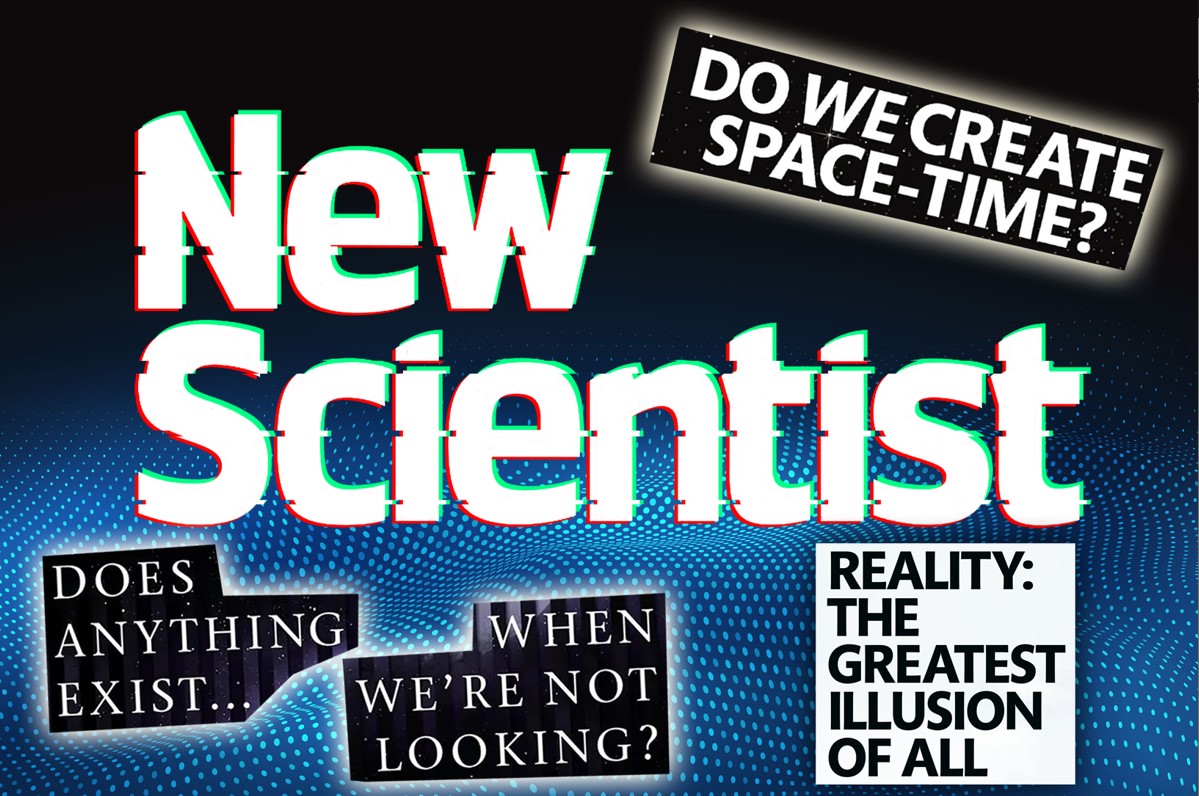The recently awarded 2022 Nobel Prize in Physics has been accompanied by much chatter in popular science columns about how the work of the three awarded scientists has proven that there is no such thing as ‘objective reality’, and the world is not real. Even the Nobel Prize committee itself succeeded in misrepresenting the science. Idealist mysticism has made much headway in the sciences, and is expressed most crudely in popular science journals. Perhaps the worst specimen is the once highly regarded New Scientist magazine, as the following article from issue 37 of In Defence of Marxism magazine explains.
A note on this year’s Nobel Prize in Physics
The three winners of this year’s Nobel Prize in Physics – Alain Aspect, John F. Clauser and Anton Zeilinger – are being hailed as having proven that the world is not ‘locally real’. According to the Nobel Prize committee itself, the implications of their work “[mean] that quantum mechanics cannot be replaced by a theory that uses hidden variables.”
Quantum mechanics is fundamentally a probabilistic theory. Those who interpret quantum mechanics in an idealist fashion are content that this is a complete description of the world. After all, if the world only pops into existence when we look at it, it might as well exist in an indeterministic haze when we are not observing it. But for materialists, the behaviour of matter is deterministic – i.e. it obeys laws of cause and effect. Hypotheses that explain quantum mechanics by recourse to deeper, deterministic laws (i.e. hypotheses that retain cause and effect!) are referred to as ‘hidden variable’ theories. This is the meaning of Einstein’s celebrated aphorism, “God does not play dice”. He believed that there must be some deeper, more fundamental causality.
But the Nobel Prize committee has breezily declared that three scientists have now banished cause and effect from science, and have proven that the world exists in an indeterminate ‘quantum haze’ until we observe it, when it finally pops into existence. This is categorically untrue.
The denial of cause and effect opens the door to reactionary, mystical conclusions. The popular science website Big Think interpreted the research of the scientists as meaning that “[an] objective reality, devoid of the actions of an observer, does not appear to exist in any sort of fundamental way.”
This is complete and utter subjective idealism. And it is not what the awarded scientists discovered. Their discoveries are interesting enough, and the nonsense being written about their work does them a disservice.
What they actually discovered were ways of practically testing the theoretical work of the physicist John Bell, famous for what is known as ‘Bell’s inequality’. Bell’s inequality is a theoretical framework for setting limits beyond which we can rule out local causality. However, this is not to throw out causality in general. Rather, it seems to indicate that cause and effect are non-local – i.e. capable of operating on the quantum level over vast distances. Indeed, Bell himself favoured the non-local hidden variable theories of David Bohm.
This is a remarkable enough discovery in itself. It contradicts common sense, whereby causes operate locally and not at a distance. It throws up new scientific and philosophical problems. But it is not at all the same as saying that there is no causality and that it is the observer that brings reality into existence!
The output of New Scientist in the past few years demonstrates how subjective idealist nonsense is pumped into the public consciousness, and given the weight of an esteemed popular science journal. This entirely reactionary attack on the fundamental premises of science shows the dead-end of bourgeois thought, which is descending into mysticism and superstition. Moreover, these ideas are useful to the ruling class, as they can be used to blunt class struggle. After all, if reality is merely a subjective matter, how and why would we seek to change it? It is the duty of Marxists to reject this reactionary rubbish, and stand in defence of rational thought.
New Scientist magazine has been conveying complex scientific ideas to the general public in an accessible way for over six decades. Oh, how the mighty have fallen! Alongside the indignity of its 2021 purchase by the Daily Mail General Trust (Britain’s foremost producer of right-wing rags), this once-proud publication has increasingly turned its back, not only on quality science journalism, but reality itself.
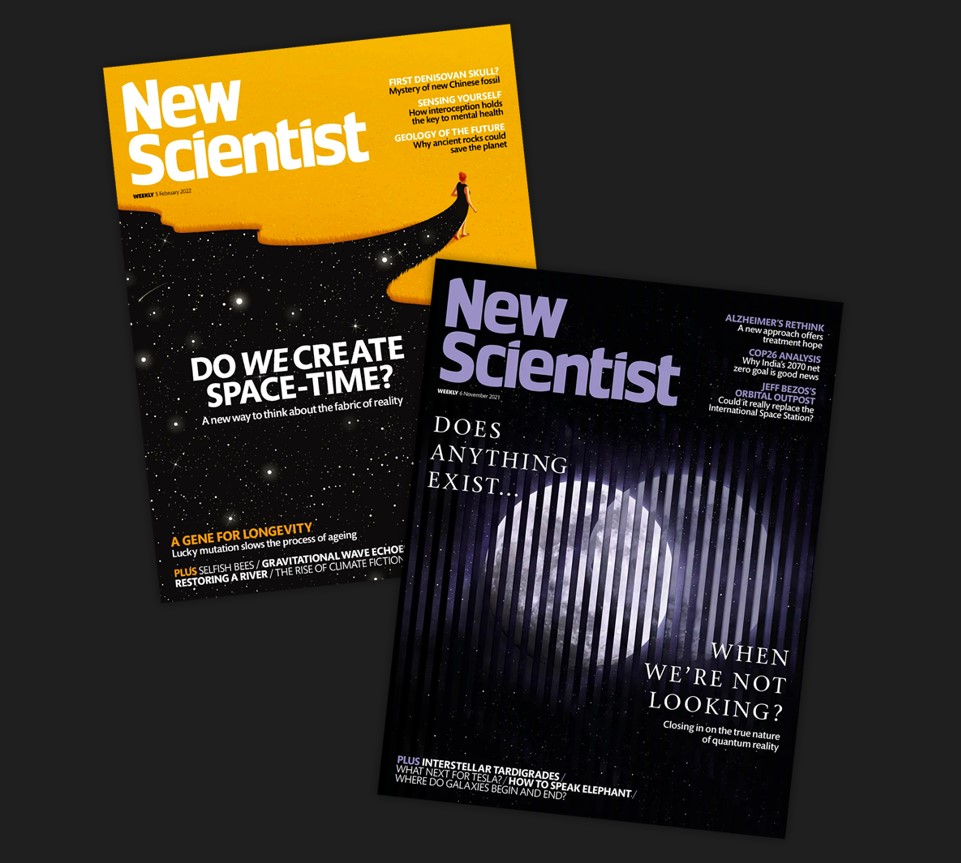 In February 2020 New Scientist ran a feature, with the headline, ‘Can we perceive reality?’ / Image: New Scientist
In February 2020 New Scientist ran a feature, with the headline, ‘Can we perceive reality?’ / Image: New Scientist
The dead end of capitalism is leading the ruling class to promote mysticism and solipsism (the idea that the sole reality is the one in my mind). This is having a corrosive effect on science and philosophy at all levels. Instead of educating readers about the latest inspiring breakthroughs in human knowledge, magazines like New Scientist are filling their pages with idealist drivel. Ironically, these notions are neither new, nor scientific. In fact, they mostly parrot old ideas, such as those of the reactionary 18th Century Bishop George Berkeley – an outspoken enemy of science, and particularly of his contemporary, Sir Isaac Newton.
We are not suggesting the majority of scientists share these views. But it is undeniable that New Scientist is giving a major platform to subjective idealism, as we can see with the example of three featured articles, published between 2020 and 2022, two of which made the front page. These reflect a subjectivist trend within the scientific establishment, which is being communicated through popular culture to the wider public, for nefarious ends.
‘The Case Against Reality’
In order for science to advance, it must take as its starting principle that there is a single, objective reality out there, our understanding of which can be perfected through observation and experiment. Instead, a February 2020 New Scientist feature, with the headline, ‘Can we perceive reality?’, opens on a note of existential uncertainty:
“I don’t know about you, but I feel that I have a perfectly good perception of reality. Inside my head is a vivid depiction of the world around me, replete with sounds, smells, colour and objects. So it is rather unsettling to discover this might all be a fabrication” (our emphasis).[1]
Unsettling indeed! And what is the cause of the author’s sudden lapse in confidence in their senses? They cite Donald Hoffman, a psychologist at the University of California, author of a modestly-titled book, The Case Against Reality. Hoffman presents his so-called ‘interface theory’ of perception, arguing that our sensory systems condense the complexity of the real world into a simplified “user interface” – filtering out superfluous information for the benefit of our comprehension.[2]
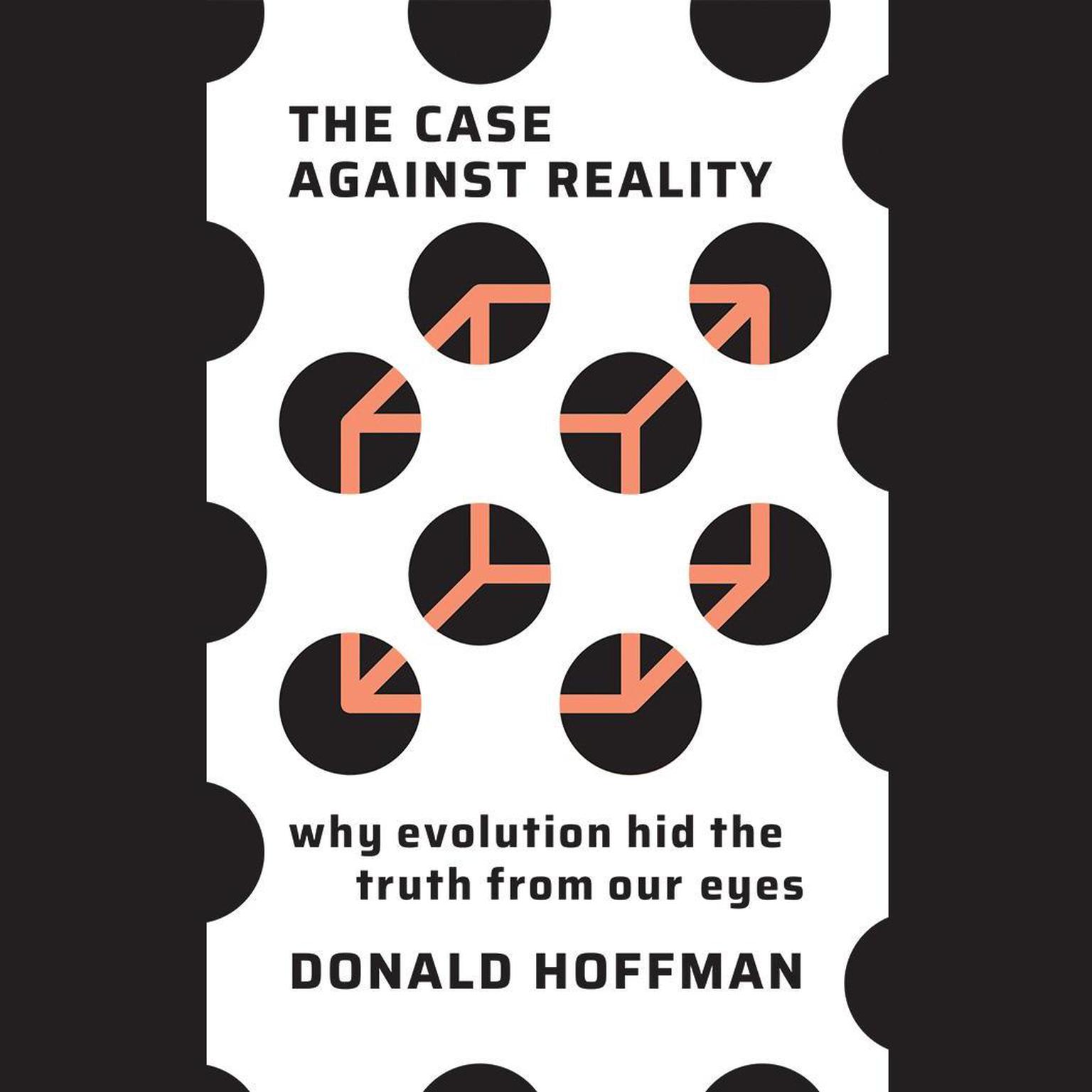 In his book The Case Against Reality, Donald Hoffman merely recycles an argument proposed hundreds of years ago by Immanuel Kant / Image: W. W. Norton Company
In his book The Case Against Reality, Donald Hoffman merely recycles an argument proposed hundreds of years ago by Immanuel Kant / Image: W. W. Norton Company
Now, it is certainly true that our brains are adept at recognising patterns and unconsciously filtering out much in our sensory experience. For Prof. Hoffman, however, the ‘interface’ is all that exists. What we think of as reality is nothing but an “abstract data structure for something that doesn’t even exist in space and time”, and therefore, “[i]f you have this notion that reality is something that is inherently different from the mind, then it becomes paradoxical to think that we ever have access to reality.”[3]
This ‘paradox’ is identical to an argument proposed hundreds of years ago by Immanuel Kant, who despite his many important contributions to science and philosophy, was an idealist, and thus had his limitations. Kant reasoned that we can only know appearances of reality, based on our sense perceptions, and never the ‘thing-in-itself’. In exactly the same way as Prof. Hoffman argues the mind imposes a ‘data structure’, Kant argued the mind imposes a priori abstract thought categories to make sense of our sense data. But whilst these categories may help us order our thoughts, for Kant, the essence of reality itself is unknowable.[4]
However, as Friedrich Engels explains in Ludwig Feuerbach and the End of Classical German Philosophy, practice, development and the history of science are the ultimate proof of the objective world. He gives the example of developments in biology and chemistry, which have allowed scientists to reproduce natural phenomena, including the chemicals produced internally by plants and animals. These were thus transformed by the march of science and human knowledge from ungraspable “things-in-themselves” into “things for us”.[5]
To give him his due, Kant was a scientist and philosopher of stature. But by replicating his weakest side, Prof. Hoffman undoes centuries of progress at a stroke. The author then takes Hoffman’s arguments to their conclusion, asking whether “people at least share the same misrepresentation?” This seems like a reasonable assumption, the author suggests. After all, “humans have roughly the same brains and sensory systems, and when we talk about our conscious experiences we all seem to be on the same page.”[6]
But, the author warns, “we cannot be sure. The only way you know you exist as a conscious being is experience of your own consciousness. The nature – and even existence – of other people’s consciousness is a closed book. For all you know, everybody else is a zombie”.[7]
Reading this stuff, it certainly feels like one’s brains are being slowly consumed by the shambling undead. Knowingly or not, the author is resurrecting an ancient argument, whose most prominent proponent in the history of philosophy was the reactionary Bishop Berkeley. Although, at least in Berkeley’s case, he had the honesty to make clear his enmity towards the scientific revolution of the 18th century, and specifically materialism.
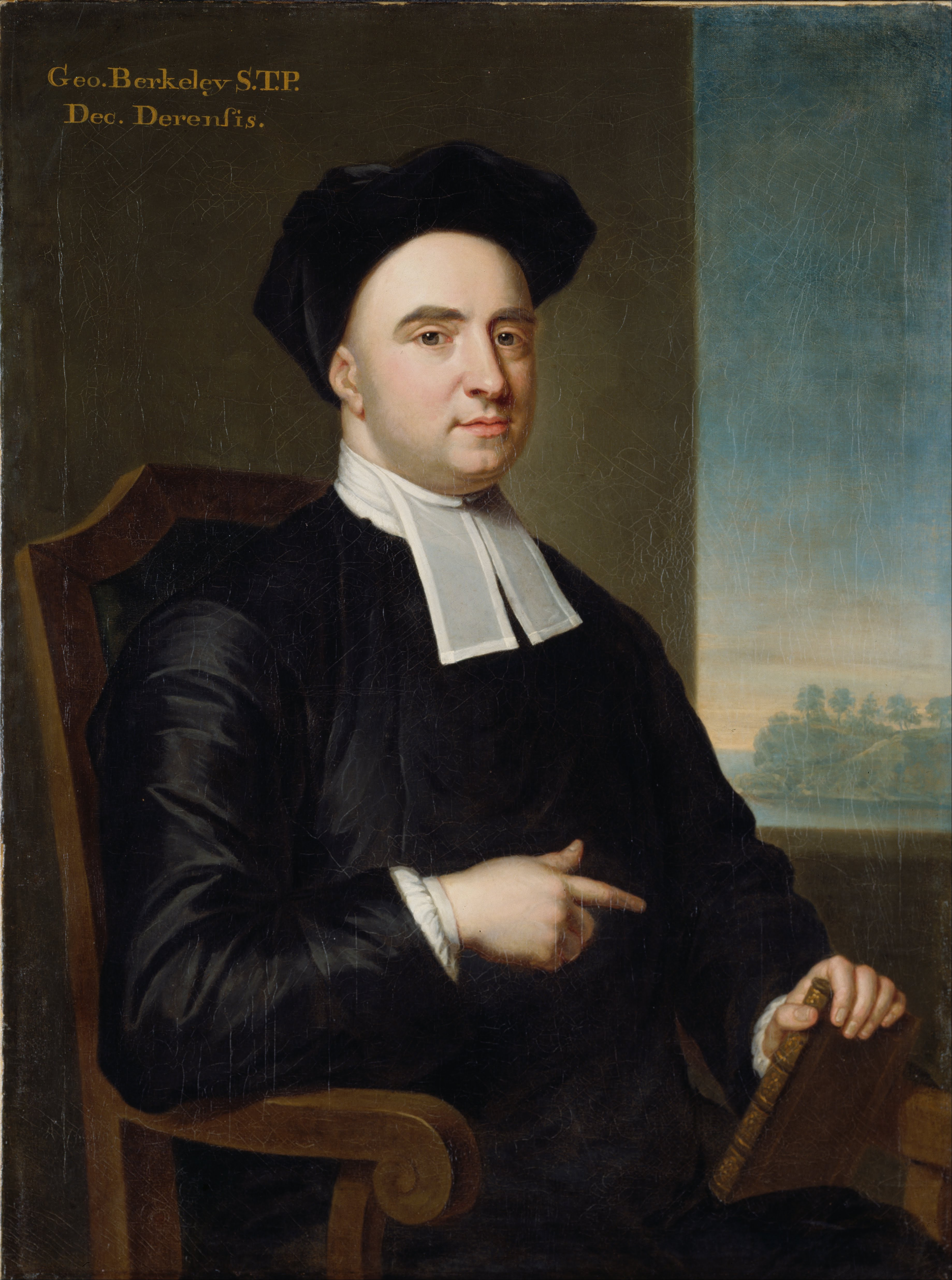 Bishop Berkeley at least had the honesty to make clear his enmity towards the scientific revolution of the 18th century / Image: Google Art Project
Bishop Berkeley at least had the honesty to make clear his enmity towards the scientific revolution of the 18th century / Image: Google Art Project
Berkeley recognised that materialism contained the kernel of atheism, by stating that knowledge and truth flow from studying and experimenting on the material world, rather than from God. His thrust against materialism was based on a trick. Berkeley’s subjective idealism held that, if one can only know the world through the senses, it is impossible to be sure of anything but one’s own sensations. Therefore, the so-called real world, nature and every other human being only exist insofar as they are being perceived by the human mind. He writes, in The Principles of Human Knowledge:
“It is indeed an opinion strangely prevailing amongst men, that houses, mountains, rivers, and in a word all sensible objects have an existence natural or real, distinct from their being perceived by the understanding. But with how great an assurance and acquiescence soever this principle may be entertained in the world; yet whoever shall find in his heart to call it in question, may, if I mistake not, perceive it to involve a manifest contradiction. For what are the forementioned objects but the things we perceive by sense, and what do we perceive besides our own ideas or sensations; and is it not plainly repugnant that any one of these or any combination of them should exist unperceived?”[8]
This is the same line of reasoning presented by Hoffman. But whereas Berkeley was explicitly attacking materialism and science, Hoffman’s ‘theory’ is being printed approvingly in a world-renowned scientific magazine! It is an indictment of the decline of capitalism and its inability to advance human thinking that centuries-old idealist dross is today being revived as ‘the last word of modern science’.
The logical conclusion of these ideas is solipsism: that is, the view that only I exist. This way of thinking reflects the bourgeois and petty-bourgeois, individualistic mindset, where the self is the final, and only truth. This solipsistic perspective is at best worthless, but at worst, it actively rejects the very idea of scientific knowledge altogether. After all, what is the point of trying to unlock the secrets of the universe when we can never know if they are true?
In its triumphant, revolutionary advance, the bourgeois class battled religious superstition under the banner of science, reason and progress. It is evidence of just how far bourgeois thought has degenerated that it has arrived at such a quagmire. We shall return to Prof. Hoffman shortly, but first, let’s have a flick through a few other issues of our once-esteemed popular science journal.
Entangled in quantum theory
This one article is hardly a dissonant note in the New Scientist magazine. Subjective idealism has cropped up again and again in the magazine in recent years. Particularly when it comes to the subject of quantum theory.
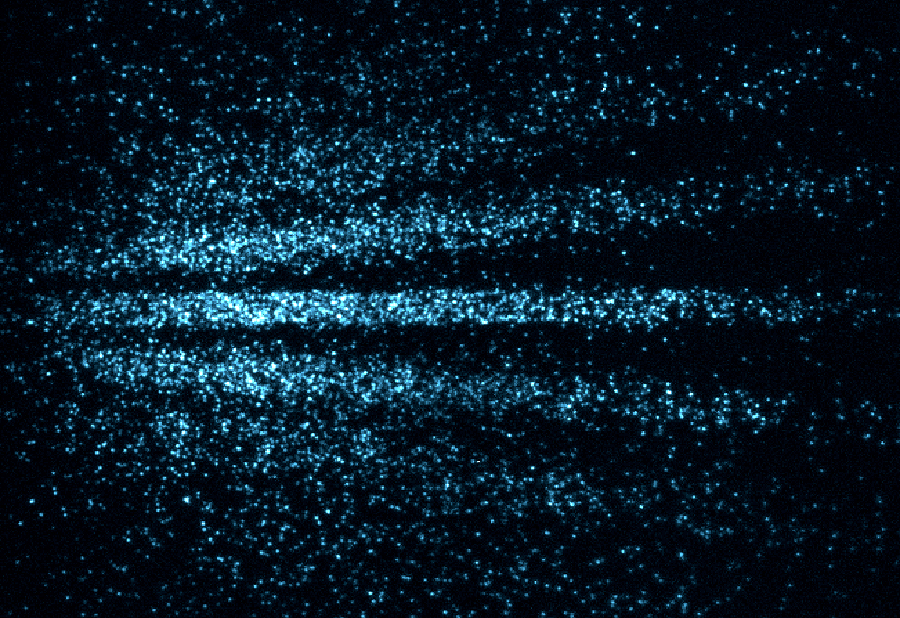 Subatomic objects express characteristics both of particles and of waves / Image: Public Domain
Subatomic objects express characteristics both of particles and of waves / Image: Public Domain
A front-page of the November 2021 issue of New Scientist asks: “Does anything exist when we’re not looking? Closing in on the true nature of quantum reality.” If the reader resists the temptation to stop looking at the magazine, banishing it from the realm of reality to the dustbin, we find the article in question (“The quantum experiment that could prove reality doesn’t exist”) concerns the boundary between the worlds of classical Newtonian and quantum mechanics.
In short, at the level of everyday life, classical mechanics hold sway: objects have clear positions and more-or-less measurable properties like momentum, energy and so forth. At the minute scale of quantum mechanics, the situation becomes more complicated. Subatomic objects express characteristics both of particles, which have discrete positions; and waves, which are continuous in space. How these two spheres interact is a major source of debate in fundamental physics.
The most popular way of getting around this apparent contradiction is the so-called Copenhagen interpretation, developed by Niels Bohr and Werner Heisenberg in the 1930s. They argued that a quantum particle doesn’t exist in a fixed state until observed. When we aren’t looking at it, it merely exists as a probability wave. They drew the conclusion that, therefore, looking at something causes it to exist in one state and not another. This is pure idealism: the notion that thought determines the material world.
New Scientist quotes Albert Einstein’s witty objection to idealist interpretations of quantum mechanics: “I like to think that the moon is there even if I am not looking at it.” Ah, but now, the author states, “a new class of experiments is putting Einstein’s conviction to the test, seeing if quantum weirdness stretches beyond the tiny world of quarks, atoms and qubits into the everyday world of tables, chairs, and, well, moons.” These experiments, the author claims, “might just kick the legs out from under one of our most firmly held beliefs: that things exist regardless of whether we are looking at them.”[9]
The article goes on to explain that scientists at various top institutions in Oxford, Vienna and London have been attempting to observe quantum behaviour in comparatively large objects, though still only tiny nanocrystals. If they can pull this off, the argument goes, then what is to stop them from extrapolating their conclusions to objects as large as the moon? As summed up by Jonathan Halliwell, a researcher at Imperial College London: “If macroscopic realism is violated, then you can’t assume the moon is there” (our emphasis).[10]
Unfortunately, even a stray photon can disrupt these experiments, and force the observed objects to behave classically (a problem known as decoherence). So it would seem the jury is still out on the moon! While there remain many unresolved problems in fundamental physics, idealist fudges don’t bring us a step closer to solving them. For now, we can be reasonably confident the moon will stubbornly continue to exist, whether or not the editors of New Scientist bother to look up.
Talking reality into being
The front cover of New Scientist’s February 2022 edition also questions the existence of reality. ‘Do we create space-time?’ the cover reads. Once again, we find ourselves in the realm of quantum mechanics. And once again, the article affirms the Copenhagen interpretation: “When quantum theory arrived… It seemed to show that by measuring things, we play a part in determining their properties.” As a result, the author continues: “many physicists question whether a single objective reality, shared by all observers, exists at all.”[11]
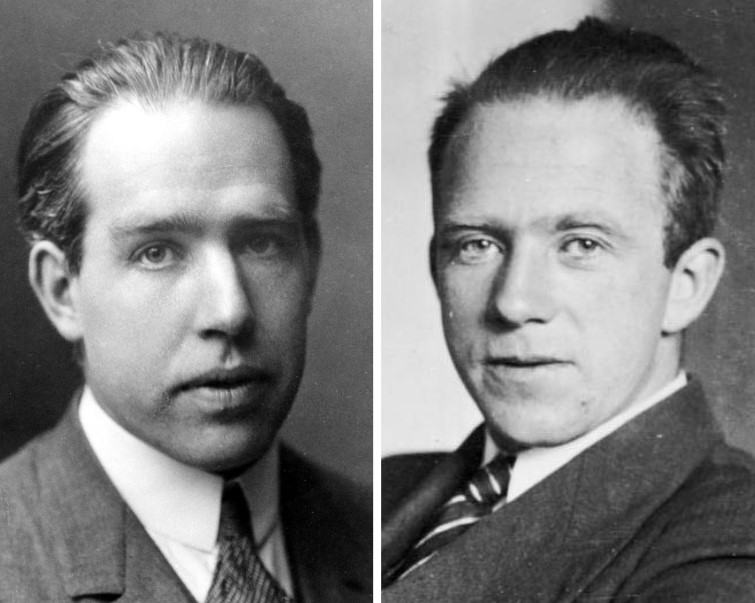 Bohr and Heisenberg argued that a quantum particle doesn’t exist in a fixed state until observed / Image: Bundesarchiv, AB Lagrelius Westphal
Bohr and Heisenberg argued that a quantum particle doesn’t exist in a fixed state until observed / Image: Bundesarchiv, AB Lagrelius Westphal
But fear not! The article goes on to reassure us that a number of scientists now believe reality does indeed exist – because we bring it into being ourselves. The author cites physicists Flavio Mercati at the University of Burgos in Spain, and Giovanni Amelino-Camelia at the University of Naples Federico II, whose research “points towards a startling conclusion”, namely:
“[T]hat as people exchange quantum information, they are collaborating to construct their mutual reality. It means that if we simply look at space and time from one perspective, not only do we miss its full beauty, but there might not be any deeper shared reality… until two people interact, they don’t share the same reality – because it is communication itself that creates it” (our emphasis).[12]
Again, we return to Bohr and Heisenberg’s idealist conclusion that the existence of a conscious observer makes reality. More than this, it’s only ‘communication’ between observers that makes their separate subjective realities a ‘shared’ reality. Presumably, it was by some kind of ‘quantum telepathy’ that we even know there is someone else out there to communicate with in the first place.
This stands the scientific conception of the universe on its head. Consciousness is nothing more than a product of matter organised in a particular way. It is the culmination of billions of years of development that saw the formation of our galaxy, solar system, and planet. Finally, the conditions emerged for the formation of organic matter and life, and eventually animal life capable of thought and communication. Who then was there to ‘observe’ the Earth when it was just a hot ball of magma?
The February 2020 New Scientist article praises John Wheeler at Princeton University as among “the most eloquent proponents” of this idealist viewpoint on quantum theory, who wrote: “Nothing is more astonishing about quantum mechanics than its allowing one to consider seriously that the universe would be nothing without observership.”[13] It calls to mind an old limerick by the Catholic Theologian Ronald Arbuthnott Knox:
“There once was a man who said ‘God
Must think it exceedingly odd
If he finds that this tree
Continues to be
When there’s no one about in the Quad.’”[14]
Of course, this begs the question: what kind of consciousness are we talking about? Would the observations of a passing fruit fly be enough? One startling solution to this so-called observer problem, presented in the February 2020 article, is that “even inanimate objects may possess a rudimentary form of consciousness. Indeed, consciousness itself may be a fundamental property of matter. If so, then there was no such thing as a ‘pre-conscious’ universe.”[15]
This resembles Berkeley's answer to a flaw in his subjective idealism: how do we know that God isn’t also a figment of our senses? The bishop got around this little conundrum by stating that the omniscient God is a universal observer:
“Dear Sir, your astonishment’s odd.
I am always about in the Quad.
And that’s why the tree
Will continue to be
Since observed by
Yours faithfully, God.”[16]
The idea presented in New Scientist is much the same: the only difference is that, rather than an omniscient deity consciously observing reality, consciousness is a universal property of matter itself. Everything from mountains, to letterboxes, to rubber bath ducks are conscious, and therefore the universe is constantly observing itself, and bringing itself into being.
But then if the universe itself is already a conscious observer, why would scientists observing a quantum particle cause its ‘wave function’ to collapse? Surely by making the whole universe conscious and having it permanently observe every other part of the universe, then every particle has a determined position at all times? It would never exist as a mere ‘probability wave’. In other words, why introduce the observer à la the Copenhagen interpretation to begin with? These ideas really fail to solve anything. Alternatively, we must conclude that what we mean by consciousness is actually God after all – that Berkeley was right. And so we have smuggled religion in by the backdoor.
An even-more outlandish proposal by scientist-and-philosopher Nick Bostrom – presented in the February 2020 New Scientist article – takes inspiration from the plight of Neo, Trinity, Morpheus and the rest of the cast of The Matrix. He suggests we are all living in a giant computer simulation, under constant observation by scientists in the ‘real’ world. And if you thought he was joking, he has suggestions for how we could test this theory, all of which are unblushingly reprinted by New Scientist:
“One idea is to look at the behaviour of the very highest-energy cosmic rays, which some physicists say are impossible to simulate 100 per cent accurately according to the ‘real’ laws of physics. Anomalies in their behaviour could be evidence that reality isn’t real.”[17]
But we should be careful with this line of enquiry, the article warns. “If our simulator overlords found out that we knew, they might just switch us off.”[18] After reading these lines, one almost wishes they would. Or at least undergo a hard reboot to rid us of these defective ‘theories’.
Even if he were proved right, Bostrom wouldn’t have brought us an inch closer to reality. Are the simulators living in their own simulated reality, continuing ad infinitum? This dreck hardly dignifies refutation. It belongs in the category of science fiction – and bad science fiction at that.
Resurrecting idealism
You might object that such nonsense is easy to dismiss and amusing to mock, and that it doesn’t represent the views of most scientists. It’s just frivolous fancy being used to sell more copies of the magazine. But there is a more insidious agenda at work here. The same article describes the view of Markus Müller at the University of Vienna that “it is not the world that is fundamental but the information and the probabilistic law, which happen to give observers the impression of a physical world with consistent laws of nature.” New Scientist then goes on to admit what is really happening here by quoting Kelvin McQueen, a philosopher of quantum physics at Chapman University in California:
“Müller’s proposal is extremely interesting. It effectively aims to resurrect an old idea in philosophy known as idealism, according to which experiences are not caused by a pre-existing physical reality but actually compose all the reality there” (our emphasis).[19]
There you have it! In black and white. These ‘scientists’ and ‘philosophers’ aim to resurrect the stinking corpse of idealism, and New Scientist is guilty of dignifying them with a platform. These utterly reactionary ideas are an insult to the heroic struggle waged against religious obscurantism by the pioneers of the bourgeois scientific revolution.
Don’t imagine Dr. Müller is unaware of the fact that his work is being used to rehabilitate idealism. As it turns out, both he and the aforementioned Prof. Hoffman are members of the ‘academic advisory board’ of the Essentia Foundation. And what is the Essentia Foundation? It is a think tank founded by the philanthropist and multi-millionaire, Fred Matser, a bourgeois who only wishes to save our souls. The Essentia Foundation states its aim quite clearly. It wishes to destroy materialism and instate idealism at the heart of modern science:
“We live under a materialist metaphysics: all that supposedly exists is matter, an abstract entity conceptually defined as being outside and independent of consciousness. This metaphysics is often conflated with science itself… The mainstream cultural endorsement of metaphysical materialism became firmly established in the second half of the nineteenth century. Since then, however, its strength has been derived mainly from intellectual habit…
“Nonetheless, the cultural prevalence of metaphysical materialism has myriad—and arguably dysfunctional—implications at both individual and social levels: it impacts our sense of meaning and purpose, our value systems, our understanding of health, disease and death, as well as the way we relate to others, the planet and even ourselves.
“Essentia Foundation questions metaphysical materialism and argues for the plausibility of idealism by leveraging the exact same epistemic values our culture reifies today… We show that, if applied objectively and consequently, these values point directly at idealism, while contradicting materialism.”[20]
These are only the most open partisans of a philosophical counter-revolution, and they apparently have a hotline straight to the editorial desks of some of the world’s biggest popular science journals! At one time, the bourgeoisie played a revolutionary role. It advanced human thinking and carried out a scientific revolution, at the core of which was a materialist method. But its modern representatives would rip the materialist heart out of science.
The advance of science and materialist philosophy during the rise of capitalism dealt a mighty blow to subjectivism and idealism of all kinds, as the folks at the Essentia Foundation recognise. Today, however, the capitalist class has become hostile towards philosophical materialism, in part due to its association with Marxism. But more broadly, denying the objectivity of reality also denies the reality of exploitation, oppression and class struggle, as well as the possibility of progress or change. Subjective idealism is thus politically useful for the ruling class.
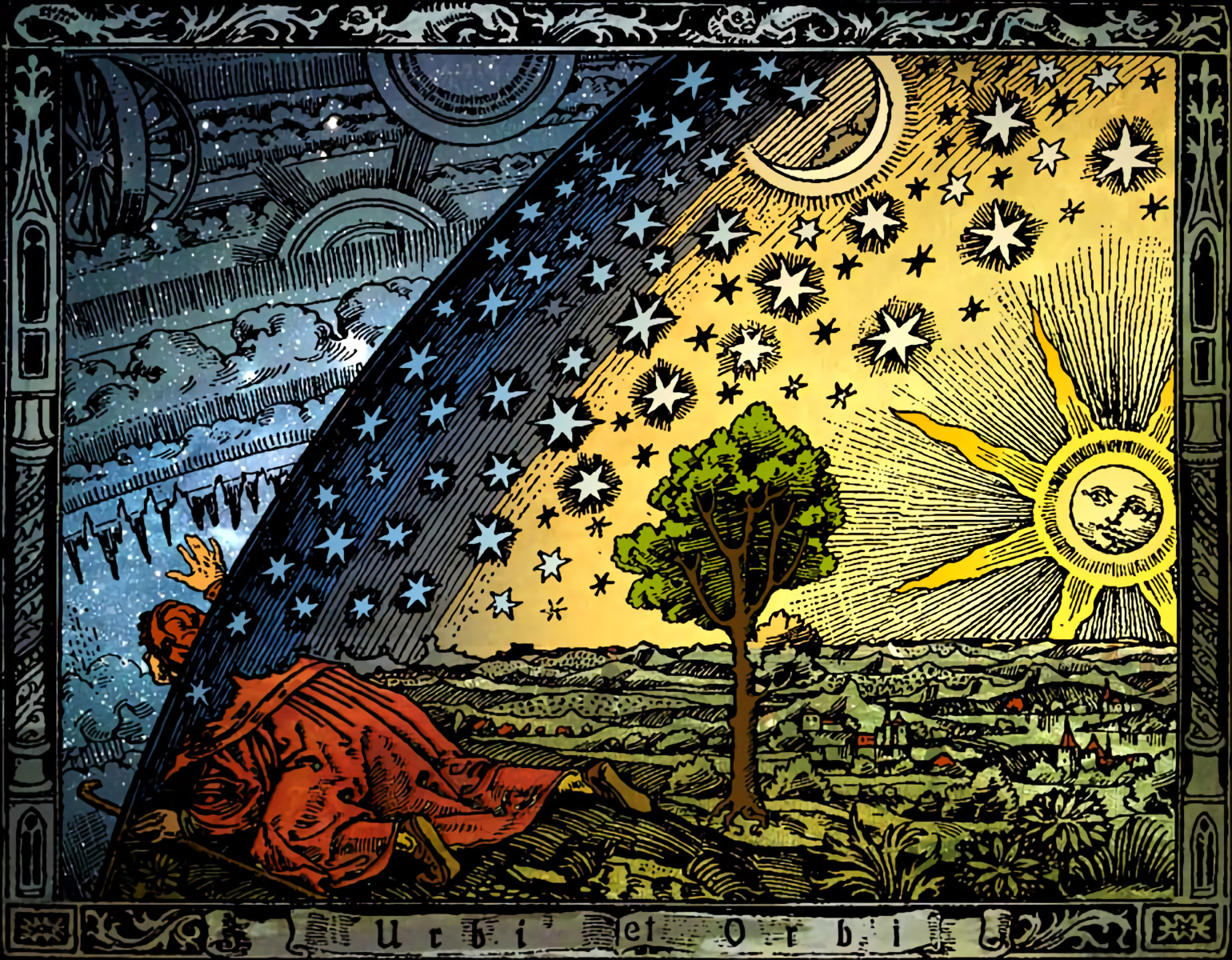 The task of science should be to continually refine our understanding of reality, to free us from ignorance and superstition / Image: Camille Flammarion
The task of science should be to continually refine our understanding of reality, to free us from ignorance and superstition / Image: Camille Flammarion
Again, these ideas are not dominant among the majority of ordinary scientists. Nor have they halted scientific progress and development, which proceeds on the assumption that objective reality exists and can be studied. However, there is a strong subjectivist trend right at the top in the scientific establishment, which, in line with the interests of the ruling class, preaches that salvation lies in introspection. Such reactionary notions are being transmitted and promoted through science journalism to the wider scientific community and beyond.
We reject all of this mystical garbage that cloaks itself in scientific-sounding phraseology. We assert clearly that human consciousness is a product of matter, organised in a particular way, and our senses give us access to an objective reality that exists outside ourselves. In the words of Lenin:
“All knowledge comes from experience, from sensation, from perception. That is true. But the question arises, does objective reality ‘belong to perception,’ i.e., is it the source of perception? If you answer yes, you are a materialist. If you answer no, you are inconsistent and will inevitably arrive at subjectivism, or agnosticism, irrespective of whether you deny the knowability of the thing-in-itself, or the objectivity of time, space and causality (with Kant), or whether you do not even permit the thought of a thing-in-itself (with Hume). The inconsistency of your empiricism, of your philosophy of experience, will in that case lie in the fact that you deny the objective content of experience, the objective truth of experimental knowledge.”[21]
Objective reality can be known, and there is no fundamental limit to our understanding of it. The task of science should be to continually refine our understanding of reality, to free us from ignorance and superstition.
The rise of mystical and subjectivist ideas today reflect the dead end of capitalism and the capitalist class itself. The system’s most avid representatives are waging a conscious assault against materialism. Marxists, all consistent materialists, and all defenders of science must wage an equally conscious counter-offensive. Unlike the ruling class, and the editors of New Scientist magazine, we must not run from reality, we must fight to change it.
[1] Donna Lu, Alison George, Daniel Cossins and Layal Liverpool, “Can we perceive reality?,” New Scientist, February 1, 2020, 39.
[2] Donald Holffman, The Case Against Reality: How Evolution Hid the Truth from Our Eyes (London: Allen Lane, 2019), cited in Lu, George, Cossins and Liverpool, 39.
[3] Ibid, 39.
[4] Immanuel Kant, Prolegomena to Any Future Metaphysics: Second Edition, trans. Paul Carus (Indianapolis: Hackett Publishing Company, 1977), 53.
[5] Frederick Engels, Ludwig Feuerbach and the End of Classical German Philosophy, in Karl Marx Frederick Engels Collected Works Vol. 26 Engels 1882-1889 (London: Lawrence & Wishart, 1990), 367-8.
[6] Lu, George, Cossins and Liverpool, 40
[7] Ibid.
[8] Quoted in George S. Pappas, Berkeley’s Thought, (London: Cornell University Press, 2000), 118.
[9] Thomas Lewton, “The quantum experiment that could prove reality doesn’t exist,” New Scientist, November 6, 2021, https://www.newscientist.com/article/mg25233590-800-the-quantum-experiment-that-could-prove-reality-doesnt-exist/#ixzz7OMJMgxYU
[10] Ibid.
[11] Amanda Gefter, “Quantum Perspective,” New Scientist, February 5, 2022, 38
[12] Ibid, 41.
[13] Lu, George, Cossins and Liverpool, 41.
[14] Ronald Knox, “Some Berkeley Limericks,” Philosophy 210/310 Early Modern Philosophy, http://faculty.otterbein.edu/AMills/EarlyModern/brklim.htm
[15] Lu, George, Cossins and Liverpool, 42.
[16] Unknown, “Some Berkeley Limericks.”
[17] Lu, George, Cossins and Liverpool, 42-3.
[18] Ibid, 43.
[19] Ibid, 42.
[20] “The challenge”, Essentia Foundation, https://www.essentiafoundation.org/about/.
[21] V. I. Lenin, Materialism and Empirio-Criticism (London: Wellred Books, 2021), 99.
